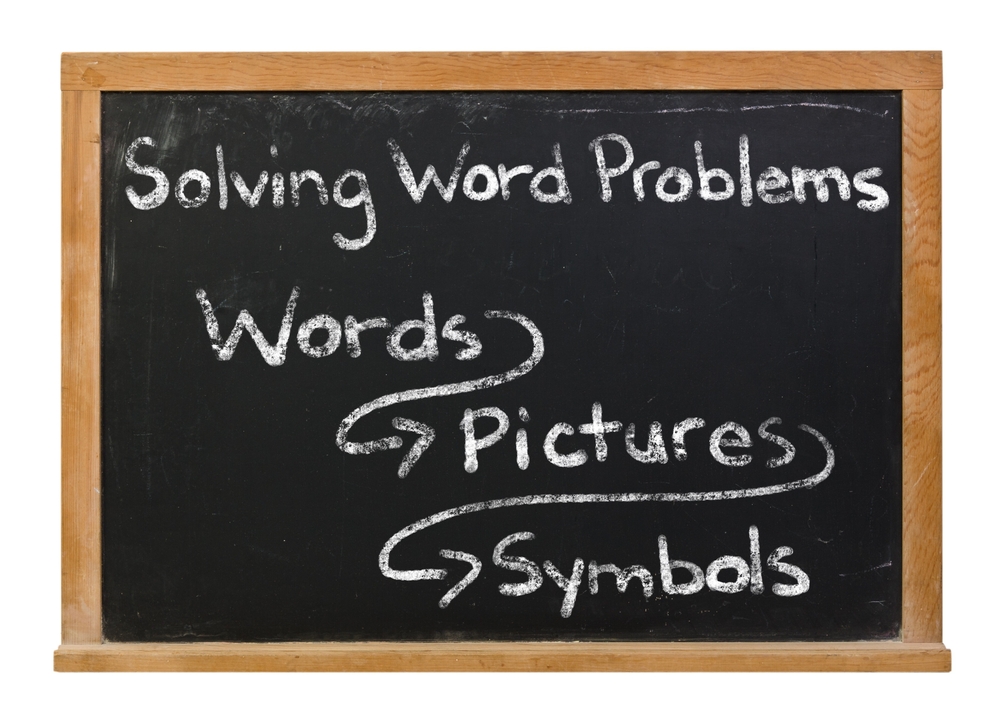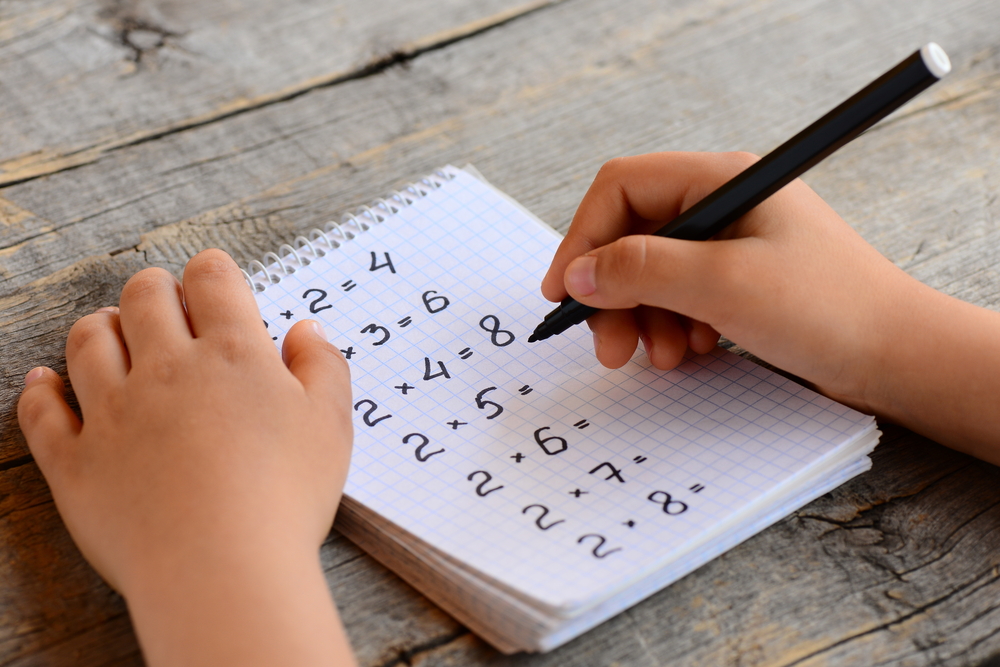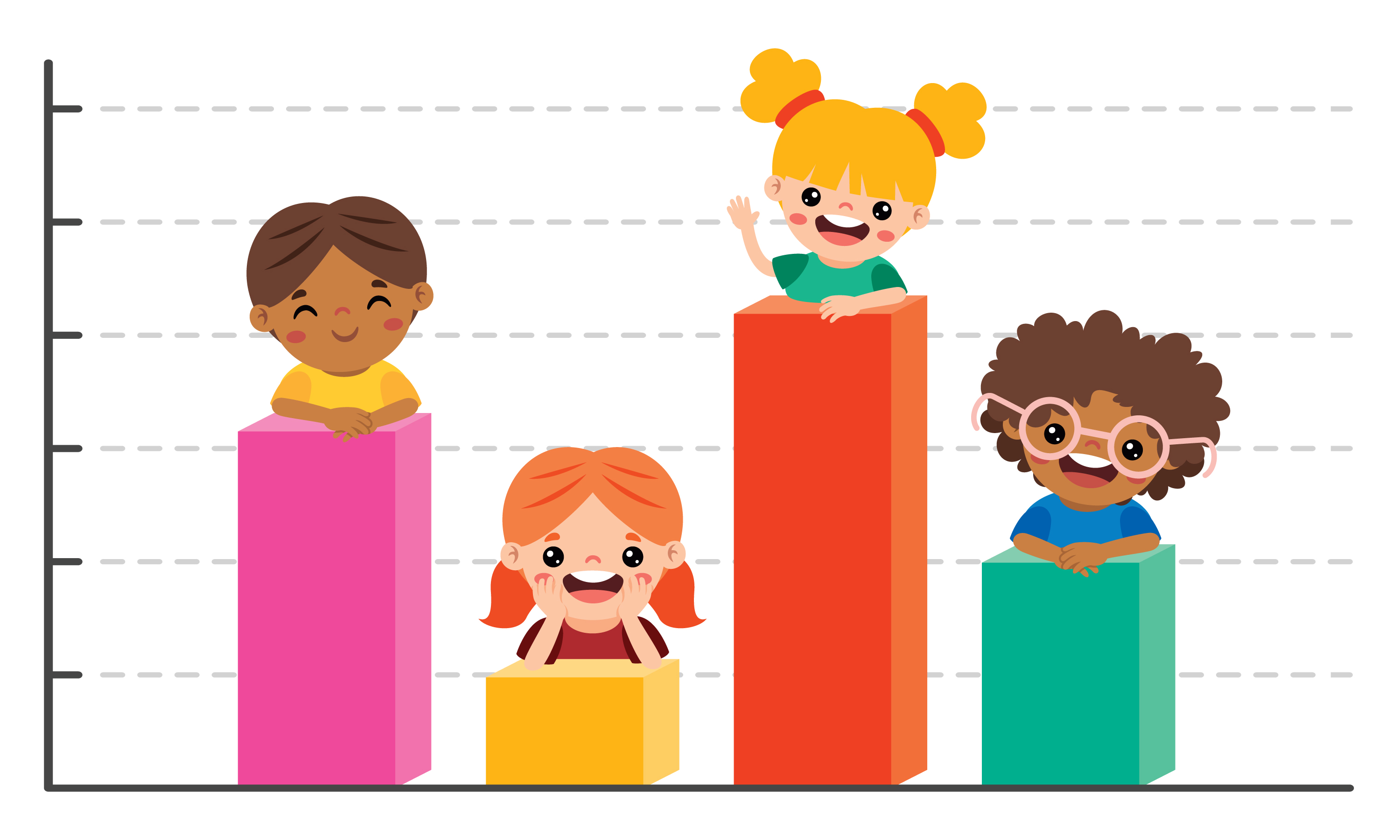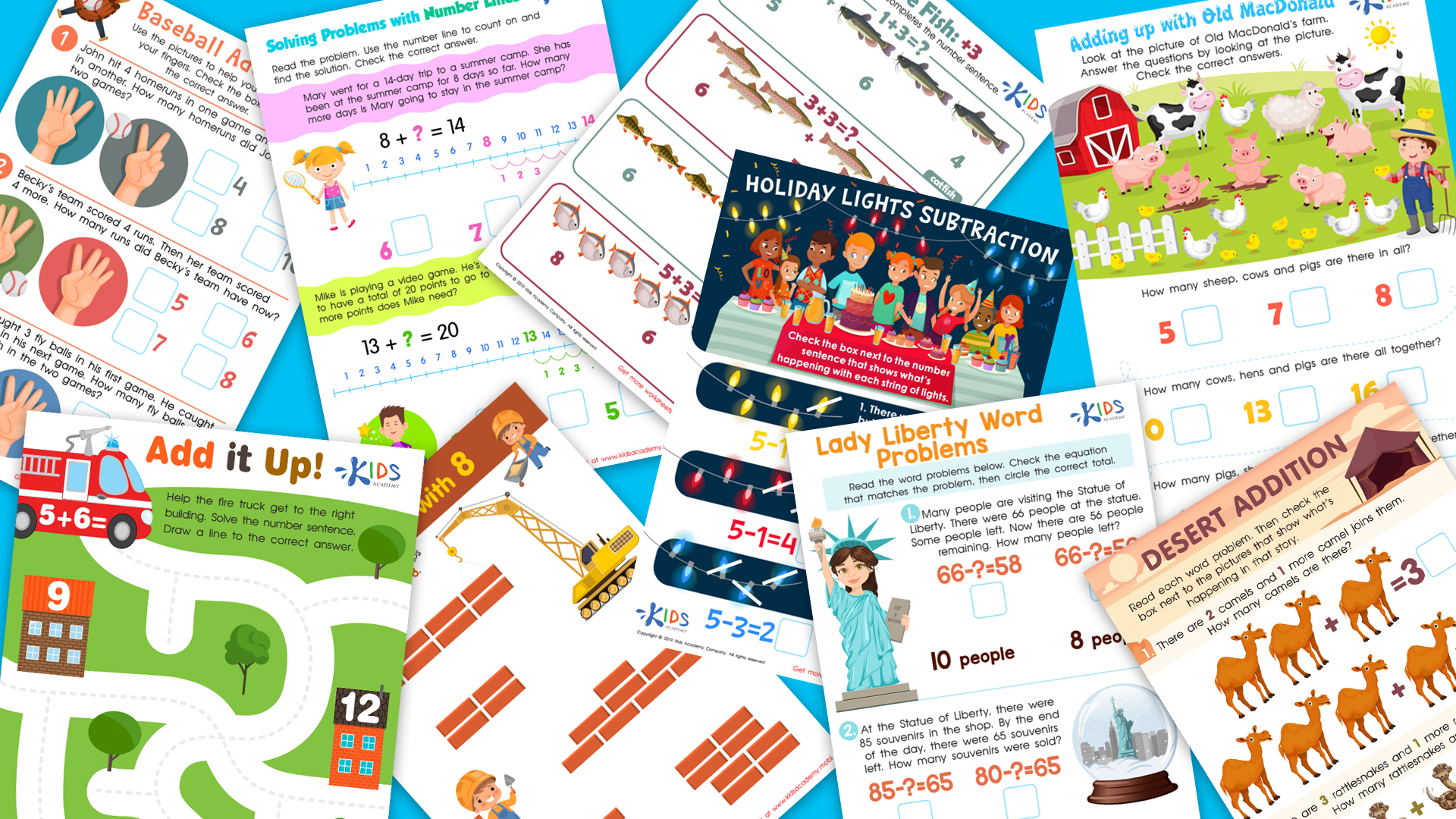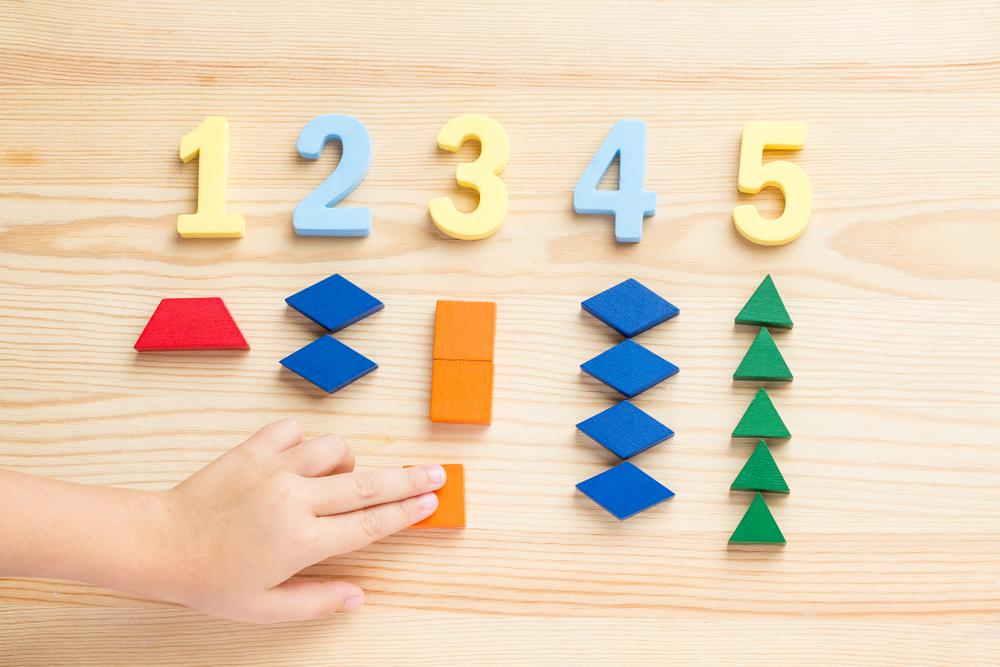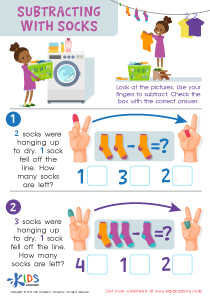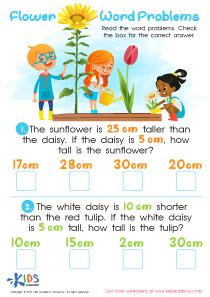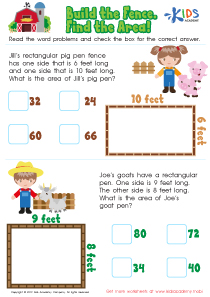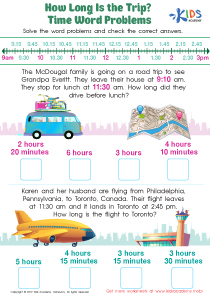Basic Addition Addition and Subtraction Word Problems Worksheets for Ages 6-7
5 filtered results
-
From - To
Our Basic Addition and Subtraction Word Problems Worksheets are tailored for children ages 6-7, designed to bolster foundational math skills through engaging and practical exercises. These worksheets help young learners practice adding and subtracting within 20, using story-based problems that make math relatable and fun. Each activity encourages critical thinking and problem-solving, essential for developing strong arithmetic understanding. Perfect for classroom or home use, these visually appealing worksheets support common core standards, making math an enjoyable and meaningful part of daily learning. Get started with confidence and build your child’s math fluency today!
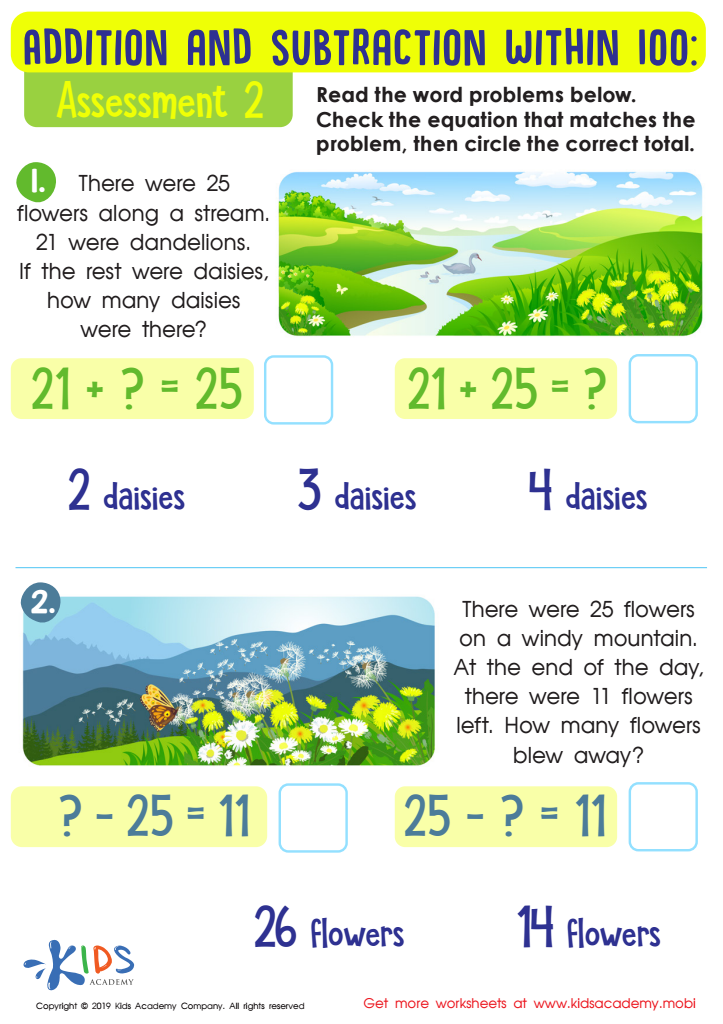

Assessment 2 Math Worksheet
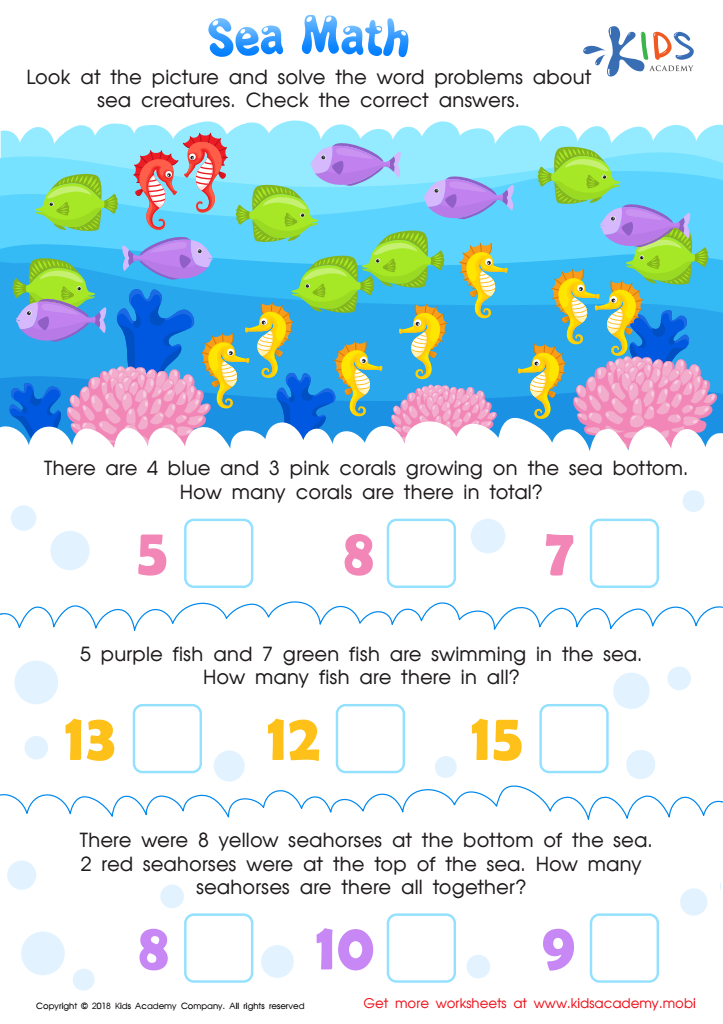

Sea Math Worksheet
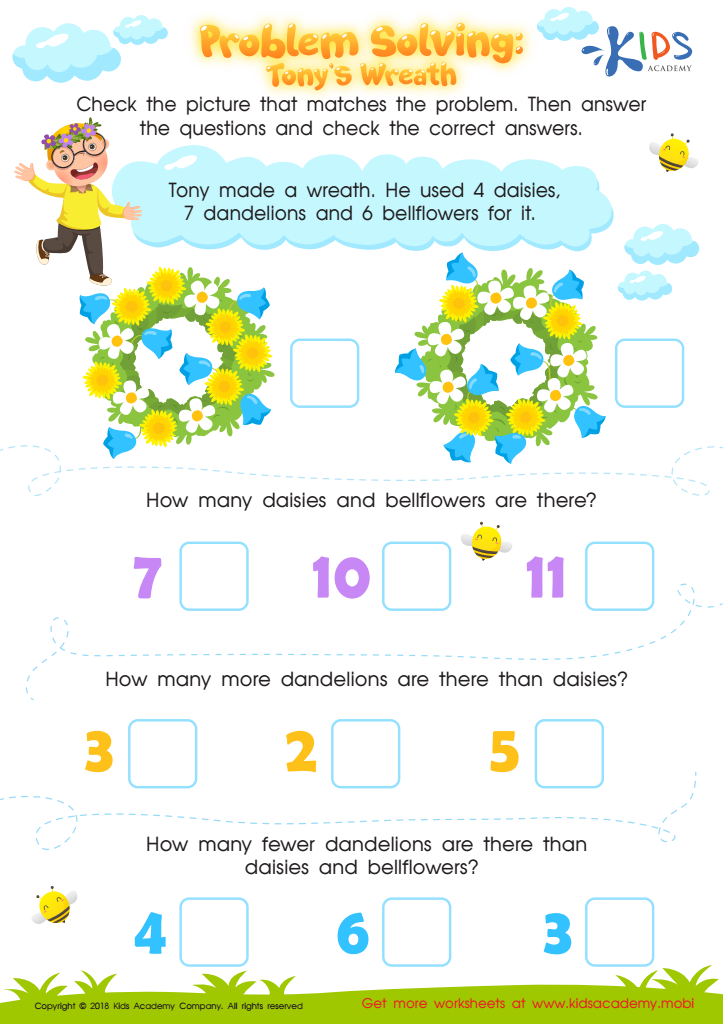

Problem Solving: Tony's Wreath Worksheet
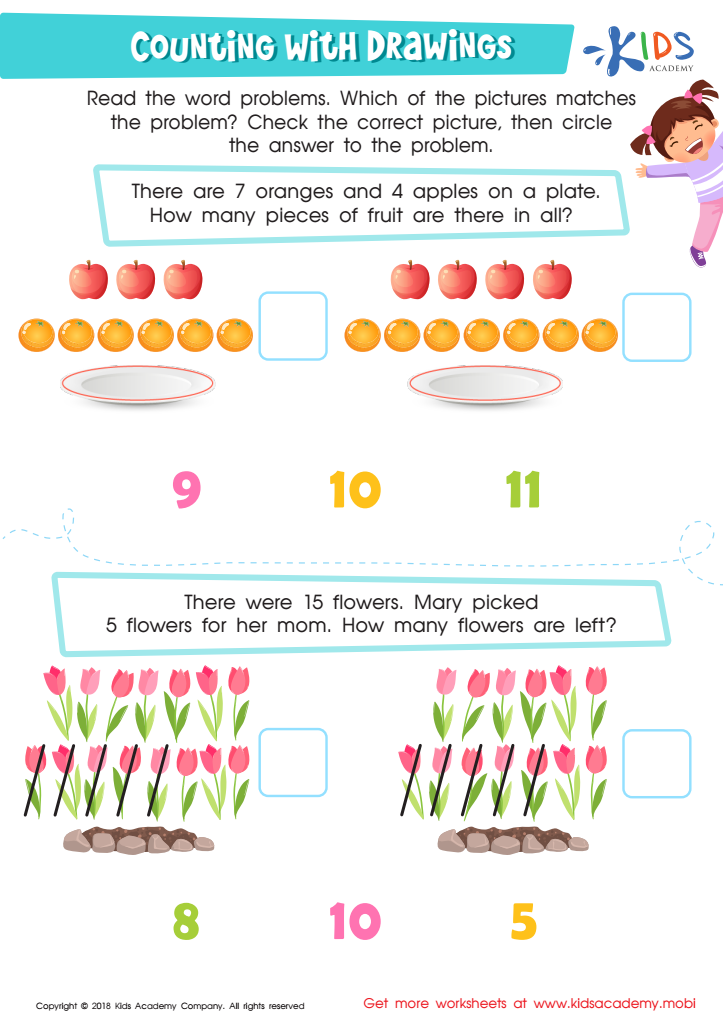

Counting with Drawings:Fruits & Flowers Worksheet
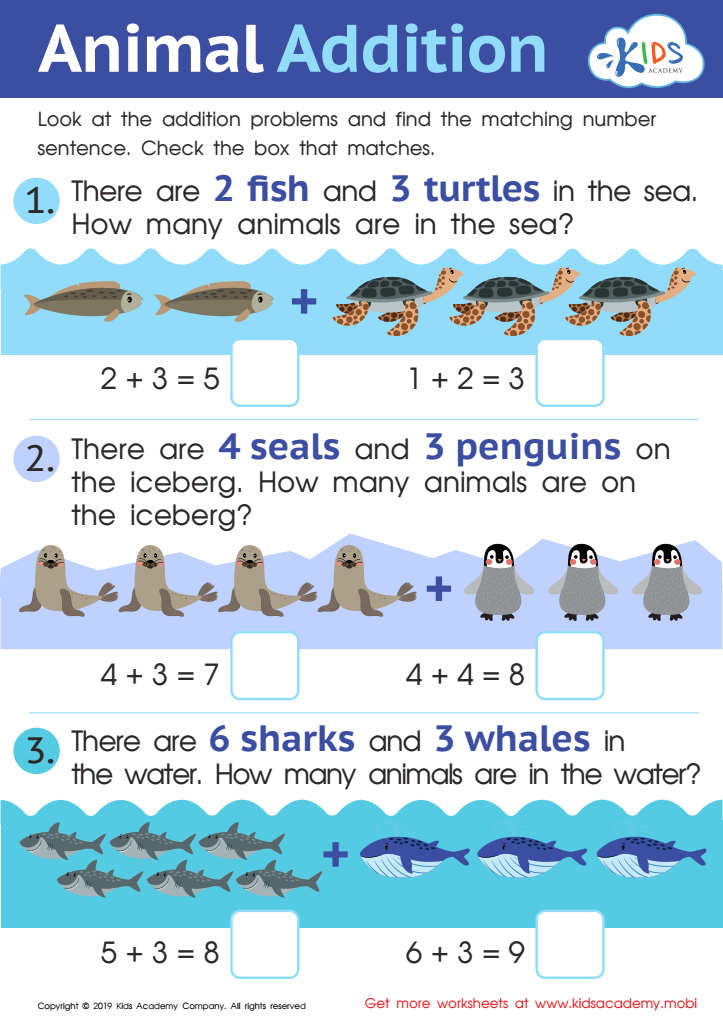

Animal Addition Worksheet
Parents and teachers should prioritize teaching basic addition and subtraction word problems to children aged 6-7 because these problems are vital for their academic and cognitive development. First, mastering simple arithmetic lays the fundamental groundwork for all future math topics, including multiplication, division, and more complex problem-solving. At this age, children are developing their number sense, an intuitive understanding of numbers and their relationships, which is essential for proficiency in mathematics.
Secondly, word problems not only develop numerical skills but also enhance reading comprehension and cognitive development. They require students to read, comprehend, and then translate textual information into mathematical questions, fostering critical thinking and problem-solving skills. This multifaceted approach hones their ability to interpret real-world situations mathematically.
Furthermore, successfully solving these problems boosts children’s confidence and encourages a positive attitude towards math. Early successes and understanding reduce math anxiety and build a strong foundation for a lifelong appreciation of learning.
Moreover, practical competencies in basic math are essential for everyday life, such as managing money or telling time, fostering greater independence and confidence in young learners. For these reasons, parents and teachers should make it a priority to guide children through basic addition and subtraction word problems at this crucial age.
 Assign to My Students
Assign to My Students



